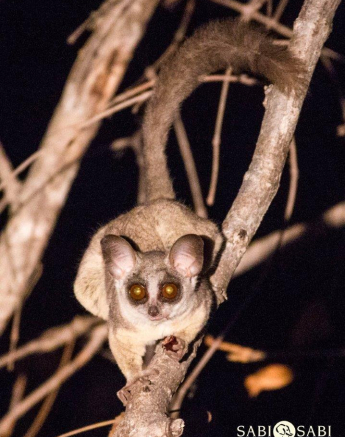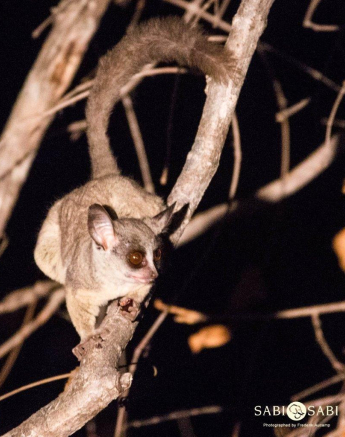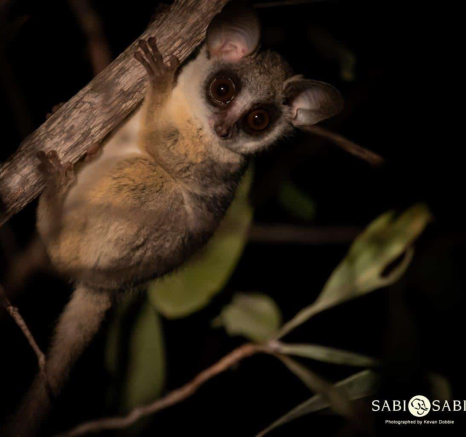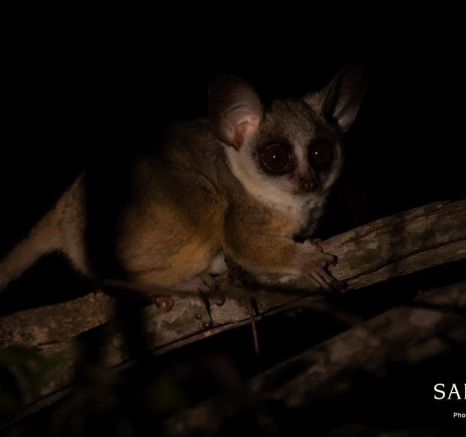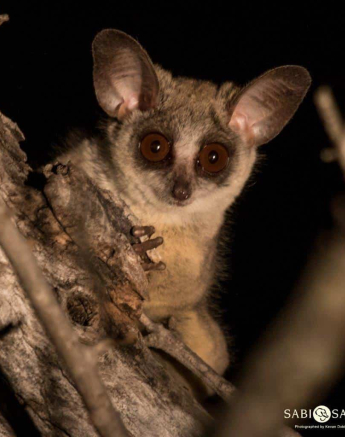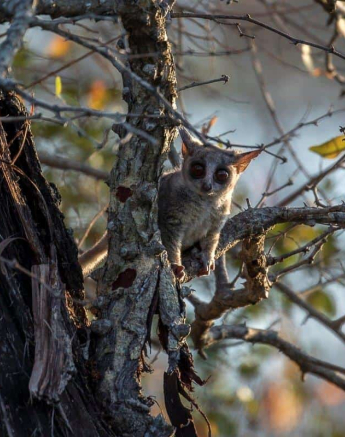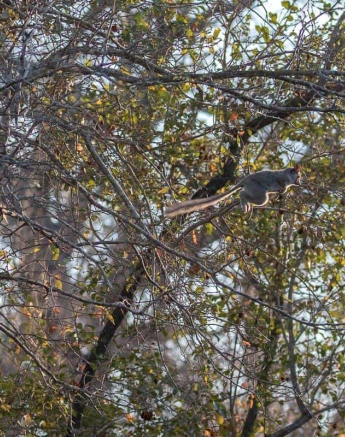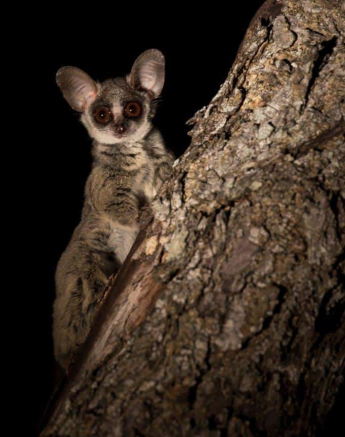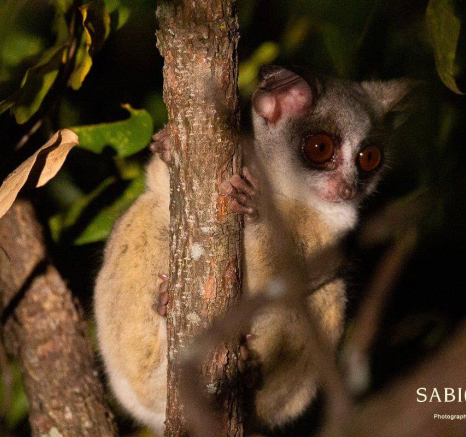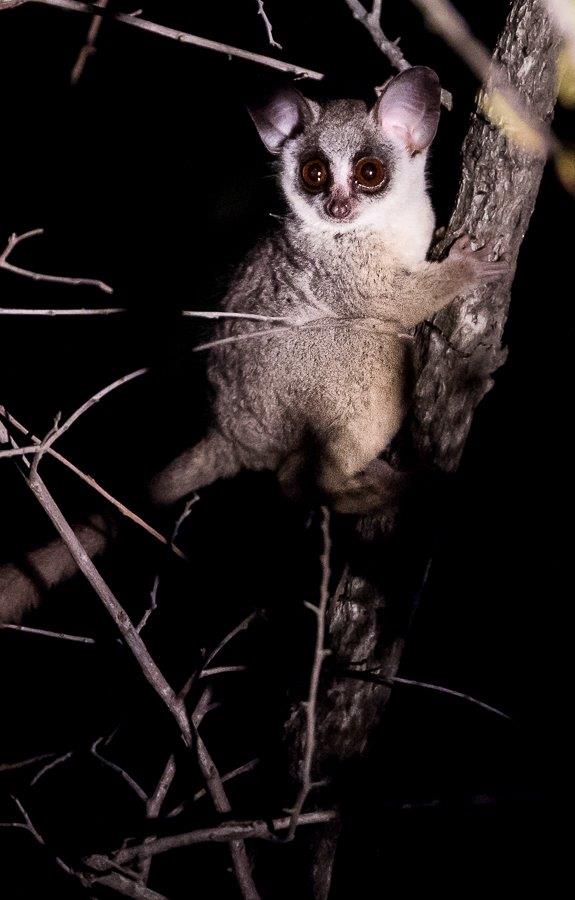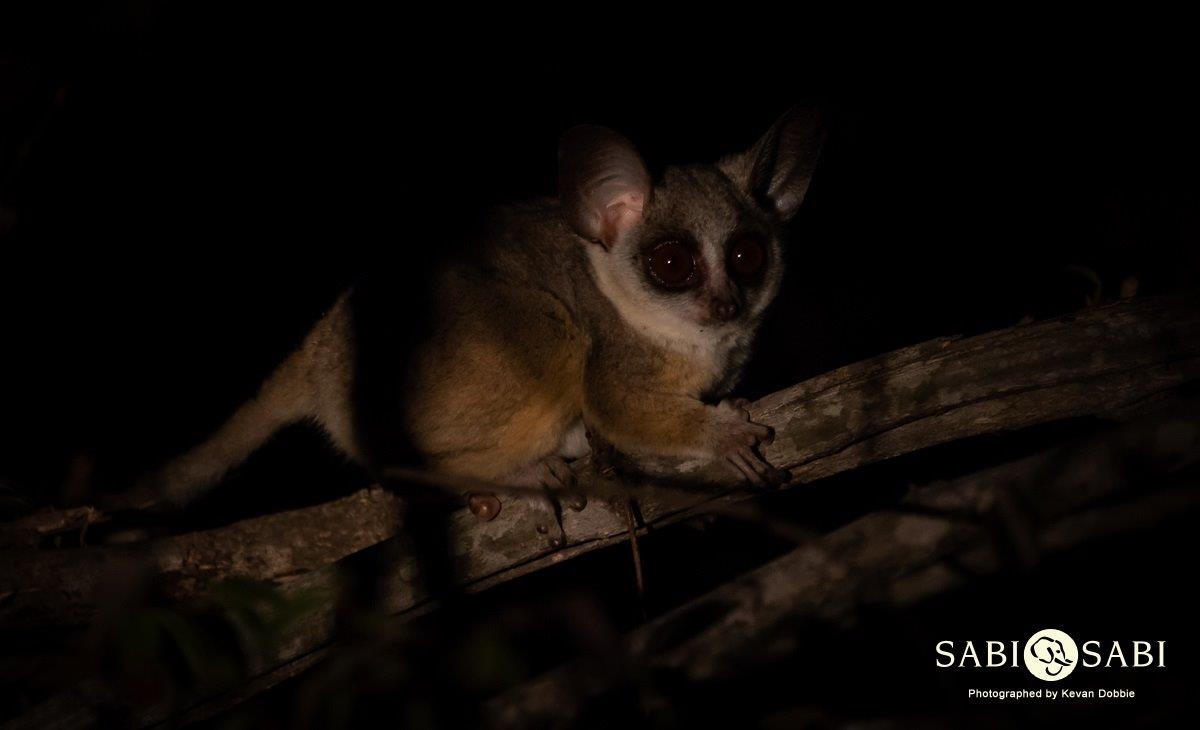Lesser Bushbaby
on Jul 05, 2019Species name: Lesser Bushbaby
Scientific Name: Galago moholi
Weight: Male: 140-160g - Female: 180-200g
Shoulder Height: Male: 13-15cm - Female: 16-19cm
General Habitat: A wide range of habitats from woodlands, forests, riverine and bushveld as well as some suburban areas around South Africa, Namibia, Botswana, Zimbabwe and Mozambique.
Diet: Mostly insectivorous but will also eat tree gum from certain tree species as well as nectar and pollen when available.
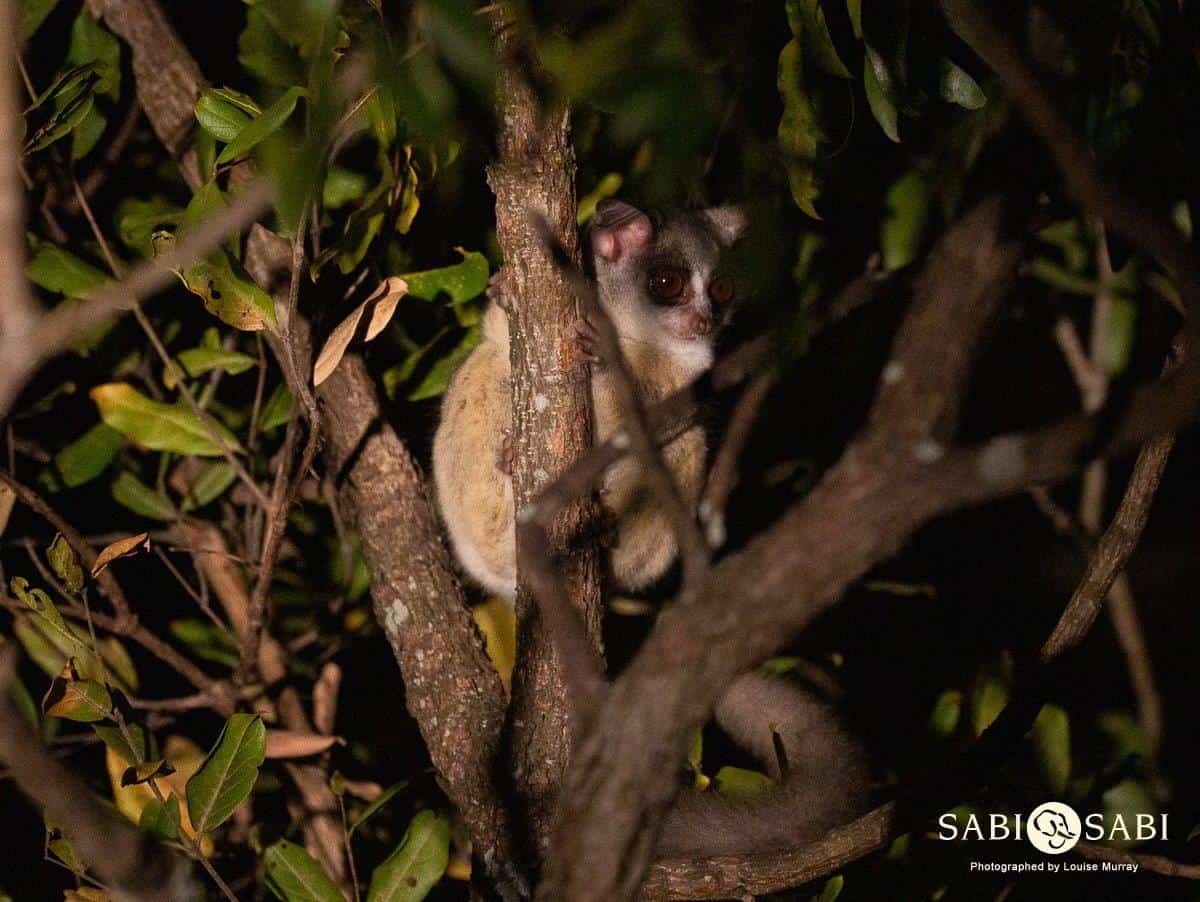
Lesser Bushbabies are incredibly interesting nocturnal primates that nest and spend most of their time hunting and foraging in trees and shrubs. They are the smallest primate in South Africa as well as one of the smallest in the world and can regularly be seen on night drives at Sabi Sabi as their huge eyes reflect any light shone in their direction. Indeed, their eyes are so huge they are unable to move within their sockets. They have excellent night vision and are efficient hunters of insects such as grasshoppers, moths, beetle grubs and stick insects which they jump upon and grab with their hands.
They have a specialized comb tooth which they use to groom themselves and scrape resin and gum from trees. They have dexterous little hands and feet and massive membranous ears that they can swivel in different directions to listen for prey and can fold back when jumping to avoid any damage. Their tiny body is lightweight and their strong legs can propel them as much as 2 meters upwards and can easily jump as far as 5 meters from tree to tree as they navigate their territories searching for prey.
Their water requirements are mostly met in the food they eat but they will lick dew and rainwater from leaves and crevices in trees. They live in natural tree cavities and construct nests during breeding seasons. Bushbabies usually have twins and can have two litters per year after a short gestation of just 125 days. They are polyandrous meaning the females will mate with multiple males during the peak of their oestrus cycle. Both are territorial and will urinate on their hands in order to carry their scent around as well as urine wash themselves and females to spread information via scent. During confrontations, bushbabies will usually stand on their hind legs and “box” with their hands.
They will mostly forage and hunt alone but will sleep communally during the day. Their main predators are snakes, genets, owls, servals, African wildcats and raptors but their greatest threat is fire. Galagos, or bushbabies in general are thought to be the second most common primates in Africa, after humans. They are related to Lorises and share a common primitive ancestor to Madagascar’s Lemurs.
My Memorable Sighting
Sightings of these little creatures are usually at a distance and only for a short while as they are quite shy and usually jump away from the vehicle. Being able to watch them jump from tree to tree is impressive but what we don’t usually see is them descending a tree and jumping along the ground. One evening Vorster, my tracker, spotted one that was unusually curious and watched us from the tree for some time before it jumped down and ran along the road in front of us before shooting back up into a tree nearby. Watching them interact and feed is also a very lucky sight and one that I have only ever witnessed a handful of times.
Photo Content
